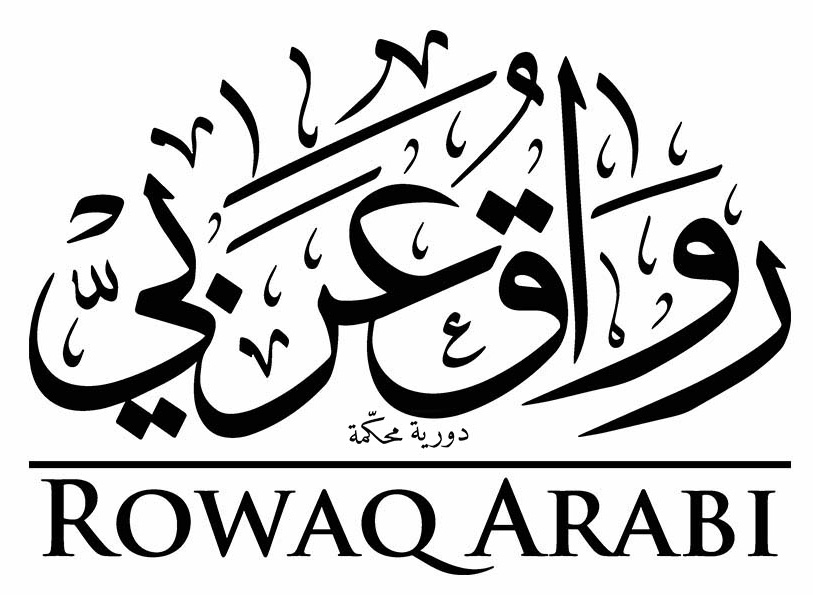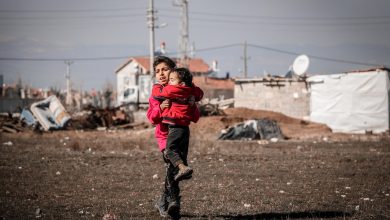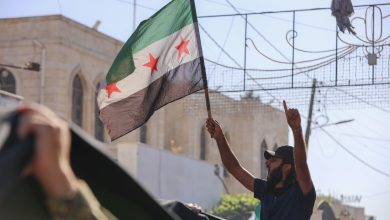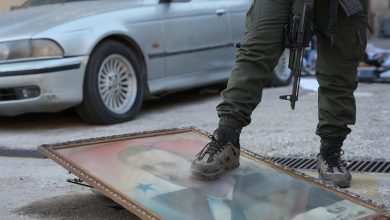Views: Sectarianism, Authoritarianism, and the Rise of ISIS in Iraq

Citation: Bamber, Matthew (2021) ‘Views: Sectarianism, Authoritarianism, and the Rise of ISIS in Iraq’, Rowaq Arabi 26 (2), pp. 35-42. https://doi.org/10.53833/SLTG9475
In 2011, the Islamic State in Iraq (ISI) militant group was at its territorial and operational nadir.[1] ISI went from controlling parts of northern and western Iraq between 2006-2009 to a few square kilometres of territory in Mosul, and conducted less than one hundred terrorist operations throughout the year. Yet within less than three years, ISIS had undergone a remarkable renewal: it announced in June 2014 the creation of a new Islamic caliphate that stretched across 90,000 square kilometres in Iraq and Syria and began an intensive phase of state-building that lasted for several years. There are multiple factors that contributed to the rise of ISIS over this 2011-2014 period including the security vacuum in Iraq after the withdrawal of US troops, the chaos of and opportunities caused by the bordering Syrian conflict, and the internal restructuring of ISIS.
This paper however focuses on one of the most important reasons for ISIS’s revival: the impact of the increasingly sectarian and authoritarian policies of the Iraqi government under Prime Minister Nouri al-Maliki. Amongst the most prominent sectarian actions of Maliki’s government were both the systemic political and economic marginalisation of Iraq’s Sunni majority, as well as the violent state repression of Sunni-led protests and the catastrophic disbandment of the tribal Sahwa movement. In this paper I discuss how these sectarian actions strengthened the resonance of ISIS’s narrative as the protectors of Iraq’s Sunni community and pushed tribal members to join ISIS whilst the security, social and economic governance vision of ISIS filled a gap created by the Iraqi government’s neglect of Sunni-majority areas.
The Rise of ISIS in Iraq
After previously setting up nascent governing institutions within the limited amount of territory it controlled in northern and western Iraq between 2006-2009, ISI in 2011 was reduced to a few square kilometres of territory in Mosul. The causes of ISI’s territorial failure were primarily external although there were also internal reasons– including the strategic overreach of ISI’s governance ambitions and schisms within ISI’s leadership.[2] The most prominent among the external causes manifested itself in the formation of the Sahwa movement in which Sunni tribes that had previously cooperated with ISI, deserted and subsequently fought against it. The Sahwa movement started as a bottom-up policy in 2005 with the formation of local councils by Sunni tribes, which primarily occurred due to widespread Sunni anger at ISI’s harsh governance against its residents and its strict interpretation of Sharia law.[3] As Ayman al-Zawahiri – the deputy leader of Al Qaeda- previously warned ISI in a series of letters: its unflinching and uncompromising pursuit of imposing its version of Islamic law had created strong enmity between ISI and its tribal residents as it had ‘violated the cardinal rule of armed insurgencies: [it] alienated public support’.[4] Sahwa councils were integrated into the US-led coalition’s ‘Surge Operation’ which brought an extra 30,000 US troops to Iraq.[5] The success of military pressure deployed by US-led forces against ISI – that included paying 100,000 Sunnis to participate in the Sahwa movement and killing at least 2000 ISI fighters and arresting 9000 others – was responsible for the suffocation of ISI territorially, the elimination of thirty-two of its top forty-two leaders and the reduction of ISI to an estimated 700 fighters.[6]
How did ISI move from its territorial and operational nadir in 2011 to the establishment of a caliphate and managing to control and govern a ‘state’ equivalent to the size of Portugal?[7] The reasons behind the quick renewal of ISI in this insurgency phase between 2011-2014 – dubbed by scholars alternatively as the ‘rebirth of the Islamist Phoenix’[8] or the ‘reinvention of the Islamic State’[9] – are multifaceted and inter-related. In accordance with the US-Iraq Status of Forces Agreement, the US began withdrawing its 170,000 troops from Iraq in 2009 with the full evacuation of all forces completed by December 2011. This troop withdrawal was accompanied by the US ‘withdrawing its influence and interest’[10] from Iraq and ‘signalled the end of ISI’s decline’.[11] The consequent security vacuum in the country allowed ISI to re-emerge from its temporary retreat in Mosul and to move relatively freely in Iraq and begin rebuilding its decimated cadres.
The withdrawal of US interests furthermore contributed to an explosion of Iraqi sectarianism, as their presence had ‘acted as a stopgap on sectarianism’.[12] Under Saddam Hussein, the deposed Sunni ruler of Iraq, the country was politically dominated by the Sunni minority in Iraq, whilst repression and state violence against the Iraqi Shia majority and Kurdish minority was a recurring feature of Hussein’s thirty-year reign. In an attempt to stop the sectarian fracturing of Iraq following the removal of Hussein, a US-led external state-building approach in 2005 imposed a confessional political arrangement in Iraq, whereby the posts of President, Prime Minister and Speaker of Parliament would always be filled by a Kurd, Shia Arab and Sunni Arab respectively. However, this confessional approach failed and Iraq descended into a protracted sectarian civil war from 2003 onwards.
Levels of communal violence only increased when the Shia Iraqi Prime Minister Maliki, who had previously attempted to politically reach out to the Sunni community, failed to achieve a majority in the 2010 Iraqi elections. Fearing for his political future, Maliki initiated a series of increasingly authoritarian and sectarian actions and policies that ‘led to a widespread repression of Sunnis….[with] a logic of accelerated purging of Sunnis’.[13] These actions included the arrest of influential Sunni Vice President Tarik al-Hashimi on terrorism charges; enlisting Iranian militia proxies such as the Badr Organisation into the Iraqi security forces; disbanding the Sahwa; and sending in the Iraqi army to clear Sunni protest camps, resulting in the death of hundreds and arrest of thousands of Iraqi Sunnis.[14] Between 2011-2014, ‘thousands [of Sunnis] were arrested across the country and hundreds killed in extra-judicial executions committed by Shia militias’. These sectarian and authoritarian actions of the Iraqi government had a significant impact on ISI’s resurgence, as discussed in three key impacts below.
Impact 1: The ISIS Narrative of Sunni Protection
A key impact of the authoritarian and sectarian actions of the Iraqi government is that it played into and strengthened one of ISIS’s core narratives portraying itself as the legitimate protector of the Iraqi Sunni community against the oppressive Shia Iraqi government. Since its inception in 1999, ISIS has had a sectarian hatred of the Shia as a core part of its ideology. Abu Musab al-Zarqawi, the founder of ISIS, stated that ‘the danger from the Shia…is greater and their damage worse and more destructive to the [Islamic] nation than the Americans’.[15] ISIS’s preoccupation with attacking the Shia led to the first dispute between it and the central Al Qaeda leadership; al-Zawahiri rebuked Zarqawi in a series of letters warning him to stop attacking the Shia as it risked drawing Iran into civil war and was not the priority of Al Qaeda.
With the formation of Iraq’s confessional political system and Maliki’s sectarian policies, ISIS increasingly addressed the Shia within the theological framework of its specific Salafi-Jihadi ideology. Multiple issues of Dabiq[16] published articles justifying the enslavement of Shia women, advocating the killing of Shia wherever they are found and their eradication from the earth purely on the grounds of theological differences. A typical example of ISIS’s religiously framed narrative is that ‘mushrik [polytheist] apostates who must be killed wherever they are to be found, until no Rafidi walks on the face of earth’.[17]
ISIS’s narrative amongst Sunni communities it sought to control in Iraq differed significantly from its online theological diatribes. ISIS presented itself as the sole religiously legitimate representative of the Sunni community in Iraq and the only group capable of defending Sunnis from continual persecution by the Iraqi Shia-led government. Many local religious leaders supported ISIS by preaching its claims that it had established a legitimate caliphate and consequently it was a religious obligation (fard al-ayn) for all Muslims to pledge allegiance to and support the caliph. ISIS was also highly efficient in establishing multiple Da’wah (proselytisation) offices in Sunni areas even prior and immediately after its full takeover of a territory.[18] As a female teacher from the Nineveh countryside explained: ‘Immediately after they appeared, ISIS members posted announcements in the square and announced that it had established a caliphate. It was our duty to follow them’.[19]
The more practical element of ISIS’s narrative of providing protection against the Iraqi government was also a strong contributing factor to ISIS’s resurgence. Many Sunnis in northern and western Iraq were subjected to continual harassment by Iraqi armed forces that peaked with the arrest of thousands and the killing of hundreds in the Sunni protest movement. Amongst many Sunnis there were feelings of grievance that the Shia-dominated army were an occupying force in Iraq. ISIS therefore offered an apparently effective solution by entirely removing the Iraqi state in Sunni areas and offered as an alternative the opportunity to live under an Islamic state without continued fear of persecution. With its sensational military victories in 2014 against the Iraqi army, the comparative efficacy of ISIS’s force was highlighted to Sunni communities even further. As a 27-year-old Sunni male civil society worker from Bashiqa, Nineveh province, explained: ‘Daesh’s aim is always to defend Sunnis. It did nothing worse than what Maliki did or what Iran is doing now. We used to be killed for being Sunni, we cannot travel now without the Iranians [the Popular Mobilisation Forces[20]] harassing us. We (the Sunni) need protection and ISIS can do that.’[21]
The Sunni protection narrative offered by ISIS was not new; since its inception ISIS had attempted with very limited success to present itself as defenders of the Sunni community. However, authoritarian and sectarian policies of the Iraqi government from 2011 onwards gave stronger resonance to this narrative and ISIS consequently became seen as one of the few viable and effective forms of protection against the Iraqi government. As Cockburn succinctly summarised ‘Mr Maliki is not to blame for everything that has gone wrong in Iraq, but he played a central role in pushing the Sunni into the arms of ISIS’.[22]
Impact 2: ISIS and Sunni Tribes – When Enemies Become Friends (Again)
A further impact of these sectarian policies was ISIS’s successful co-option of Sunni tribes following the government’s disbandment of Sahwa councils in 2010. ISIS has a complicated relationship with Sunni tribes, whom are the dominant political and social structure in western and northern Iraq. There was a degree of cooperation between the two in the initial phase of Al-Qaeda in Iraq (AQI)’s history between 1999-2003, however things swiftly devolved, as signified in Abu Musab al-Zarqawi’s statement in 2005: ‘The tribesmen are among the most important mainstays of the Jihad. These tribes have been very supportive of the Jihad and its men. Be that as it may, we warn the tribes that any tribe, party, or association that has been proven to collaborate with the Crusaders and their apostate lackeys –we will target them just like we target the Crusaders, we will eradicate them and disperse them to the winds’.[23] ISI acted on this threat and conducted a campaign of disappearances and violence against tribal members between 2006-2007– including the beheading of a tribal sheikh and public parading of his head in Ramadi, Anbar province – which proved to be the catalyst for the Sahwa movement. At its peak in 2007, 100,000 Sunni tribesmen from disparate tribes participated in the Sahwa movement which resulted in the almost complete territorial defeat of ISI.
According to Benraad, the disruption of the Sahwa movement was a deliberate sectarian policy by Maliki that was achieved through a three-fold approach: depriving the Sahwa movement of the material and financial means needed for survival, repressing members and disbanding tribal councils, and dividing the movement by setting up rival tribal structures.[24] In the US-Iraq withdrawal agreement, twenty per cent of the Sahwa movement was supposed to be integrated into the Iraqi armed forces with the remainder being appointed to civil service jobs, with salaries guaranteed by the Iraqi state.[25] Best estimates however are that two years after the withdrawal agreement implementation, only between one quarter to a third of Sahwa members were actually in these positions. This alienation of the Sahwa councils removed the traditional authority of Sunni tribal leaders and created a younger generation of tribal leaders who were far friendlier to ISI. Many thousands of former Sahwa members frequently became involved with ISI so ‘the Sahwa were disbanded and abandoned, only to be picked off by a resurgent Islamic State after 2011’.[26]
ISIS latterly adopted a dual policy to the Sunni tribal community involving both co-option and cooperation that was accompanied with continued overwhelming lethality against dissenting tribes. In order to improve its outreach and to learn more about tribes, ISIS created the ‘Office for Tribal and Public Relations’ which played a role in recruiting both individual tribesmen and tribes to pledge allegiance to Abu Bakr al-Baghdadi when he became Caliph in June 2014.[27] ISIS organised mass pledges of allegiance from tribal elders that it heavily used in its local strategic messaging. This cooperation – whether it was coerced or voluntary, as some tribes later claimed – gave further legitimacy to ISIS’s claims of acting as protectors of the Sunni community against the Iraqi armed forces. Not all Sunni tribes cooperated with ISIS however and those that refused to work with ISIS or actively fought against it faced a sustained campaign of lethal violence. The most infamous tribal massacre of this period occurred in October 2014 when ISIS killed over 600 members of the Albu Nimr tribe over three weeks.[28]
Impact 3: A Failure of Governance
In Sunni-majority provinces of Iraq, the authoritarian and sectarian policies of the Iraqi government resulted in a systemic failure of social, economic and security governance. Maliki’s governance legacy was the growing ‘Sunnification’ – increasing Sunni identification at the expense of others – of those marginalised Sunni communities who considered themselves to be victims of the Iraqi government’s purposeful security and economic marginalisation. ISIS adeptly exploited this governance failure by offering – at least initially – an alternative governance vision to Sunni communities that offered a relative sense of safety, removal of corruption and provision of basic services that had been undelivered by the Maliki government.
Prior to the arrival of ISIS, Sunni residents in northern Iraq described an effectively lawless security situation in which kidnappings, ambushes, roadblocks and general street violence were endemic. State institutions, such as the Iraqi police and Iraqi armed forces, charged with enforcing law and order were either unable or unwilling to fulfil their function. The perception amongst many interviewees was that employees of these Shia-dominated institutions were ‘unconcerned with the concerns of ordinary Sunnis’[29] and rather spent time ‘harassing us at checkpoints and trying to fleece us’.[30] By contrast, in the two most comprehensive surveys conducted with former residents of ISIS-occupied territory, ISIS were deemed to be far more effective governors in providing security.[31] It achieved this by initially prioritising establishing security for its residents through the implementation of a harsh legal and justice system that ISIS institutionalised in its separate al-Hisbah (Morality Police), Islamic Police, Intelligence and Justice and Ombudsman governing institutions. Many interviewees accorded with these surveys’ sentiments including a female Mosuli resident who stated that ‘the first year and a half was very secure. It was amongst the safest I have felt. There were almost no kidnappings and random shootings. I could walk freely, with a Maḥram [guardian] of course. But then the government started attacking ISIS and we became afraid to go out again’.[32] A male teacher from Anbar province likewise compared the experience under ISIS with that under Maliki: ‘for several years [under Maliki], there were always killings and kidnappings occurring. I do not like ISIS, I do not agree with what they did, but they did make it safer for us to go outside’.[33]
Beyond security, ISIS likewise concentrated on fulfilling the social and economic governing functions that were perceived by Sunni communities to be absent from the Iraqi government. ISIS established a wide-range of economic and social governing institutions in its Iraqi territories – including dawaween (ministries) for public services, zakat, electricity, education, healthcare, amongst others[34]– within the first few months of taking over a territory. Although the effectiveness of these social and economic institutions certainly declined over time, ISIS for a limited period did manage to mimic both the function and administration of contemporary nation-states. Many residents reported positively on these aspects of ISIS’s governance, especially in comparison to the preceding Maliki government. As a 55-year-old disabled father of six from Raqqa stated: ‘I loved the Islamic State. They took better care of me and my family. I received money each month from the zakat office, around ninety USD, with extra stipend for the children and wife. I pray to God for them to return’.[35] The competing vision of governance offered by ISIS in the fields of security, social and economic governance was therefore clearly appealing to Sunni communities neglected by the sectarian actions of the Iraqi government.
Conclusion: Increased Sectarianism
As shown in this paper, a key enabler of ISIS’s resurgence in Iraq between 2011-2014 was the increasing authoritarian and sectarian policies of Maliki’s government. The Iraqi government’s policies of Sunni political and economic marginalisation, repression of Sunni protests and disbandment of the Sahwa movement fuelled both the resonance of ISIS’s narrative as the protectors of the Sunni community and pushed tribal members to join ISIS. Further, the security, social and economic governance capability of ISIS temporarily filled a gap created by the Iraqi government’s neglect of Sunni-majority areas.
ISIS was eventually territorially defeated in 2018 by a combination of domestic, regional and international military actors and Maliki was replaced as Iraqi Prime Minister by Haider al-Abadi in September 2014. In spite of this, the combined authoritarian and sectarian nature of the Iraqi government has arguably increased, leading once again to a potential territorial resurgence of ISIS. A key example of this increased sectarianism is the government’s reliance on the Shia-majority Popular Mobilisation Forces (Hashd al-Shaabi) to militarily remove ISIS from its territory. Although the PMF were reportedly integrated into the Iraqi armed forces in 2016 through Law 40, the PMF act as a rival powerbase to the Iraqi government and effectively have complete control of previously ISIS-occupied Sunni areas of Iraq. Reports show that the PMF have manipulated land ownership in these areas, gained control of oil wealth, exploit Sunni residents for protection money and now have control over ‘Iraqi citizens’ movements, trade, occupation, and other aspects of private life’.[36] Human rights violations by the PMF including extra-judicial killings, torture and disappearances are well documented.[37]
The government’s countenance of the PMF domination over Sunni-majority areas of Iraq has contributed to renewed feelings of repression, marginalisation and neglect amongst Sunnis that ISIS had previously been adept at exploiting. In spite of the horrendous actions that ISIS perpetrated against residents under its control, there is a risk in some areas that Sunnis would prefer the rule of ISIS rather than the ongoing repression and marginalisation they face in their daily lives. As an engineer who fled ISIS rule after six months stated ‘I am starting to think that ISIS were right [referring to acting as protectors]. The militias treat us like dirt. They accuse me of being an ISIS member, steal from me and harass me at checkpoints’.[38] The use of sectarian and authoritarian policies by the Iraqi government is certainly one of the root causes of ISIS’s success and this has not been acknowledged by the government. The use of Shia-majority militias to effectively govern post-ISIS Sunni areas can undeniably increase the potential for an ISIS resurgence in the near-future.
Acknowledgements
The author gratefully acknowledges funding from the Swiss National Science Foundation.
[1] In this article I refer to the group exclusively as ISIS (Islamic State in Iraq and Syria/the Levant) unless I am referring to the specific time period when the group was named Islamic State in Iraq (2006-2013) or Al Qaeda in Iraq (2004-2006).
[2] For more on the internal reasons, see: al-‘Ubaydi, Muhammad, Nelly Lahoud, Daniel Milton, and Bryan Price (2014) The Group That Calls Itself a State: Understanding the Evolution and Challenges of the Islamic State (Combatting Terrorism Centre at West Point).
[3] Stern, Jessica, and J. M. Berger (2015) ISIS: The State of Terror (New York: Harper Collins) pp. 28-30.
[4] Gerges, Fawaz A. (2017) ISIS: A History (Princeton: Princeton University Press) p. 87.
[5] Weiss, Michael and Hassan Hassan (2015) ISIS: Inside the Army of Terror (New York: Regan Arts) p. 79.
[6] Hashim, Ahmed S. (2018) The Caliphate at War: The Ideological, Organisational and Military Innovations of Islamic State (London: Hurst Publishers) p. 201.
[7] At its peak in 2015, the size of ISI’s state was 100,00 square kilometres.
[8] Napoleoni, Loretta (2014) The Islamist Phoenix: The Islamic State (ISIS) and the Redrawing of the Middle East (New York: Seven Stories Press).
[9] Hashim, Ahmed S. ibid p. 160.
[10] Stern, Jessica, and J. M. Berger p. 28.
[11] Hashim, Ahmed S. ibid p. 204.
[12] Weiss, Michael and Hassan Hassan, ibid p. 87.
[13] Mohamedou, Mohammad-Mahmoud Ould (2018) A Theory of ISIS: Political Violence and the Transformation of the Global Order (London: Pluto Press).
[14] Stern, Jessica, and J. M. Berger, ibid pp.19-25.
[15] Abu Musab al-Zarqawi quoted in Bunzel, Cole (2015) ‘From Paper State to Caliphate: The Ideology of the Islamic State’, Analysis Paper 23, Brookings Project on U.S. Relations with the Islamic World p. 52.
[16] ISIS’s online English language magazine
[17] Dabiq (2014) A Call to Hijrah p. 6.
[18] Internal strategy documents from an ISIS leader revealed that Da’wah offices were one of the first institutions that ISIS established when taking over a territory. See: Reuter, Christoph (2015) ‘Secret Files Reveal the Structure of Islamic State’, Der Spiegel, 18 April, accessed 1 June 2021, https://www.spiegel.de/international/world/islamic-state-files-show-structure-of-islamist-terror-group-a-1029274.html.
[19] Interview conducted by the author in March 2019 in Dohuk, Iraq.
[20] The PMF is a Shia-dominated umbrella alliance of around 110 militias, comprising approximately 164,000 members, with many factions directly linked either to the Iranian Revolutionary Guards Council or the Iraqi Shia cleric Muqtada al-Sadr.
[21] Interview conducted in Kirkuk, Iraq by the author in March 2019.
[22] Cockburn, Patrick (2014) The Rise of the Islamic State: ISIS and the New Sunni Revolution (New York: Verso) p. 39.
[23] Al-Zarqawi, ‘Leader of Al-Qa’ia in Iraq Al-Zarqawi Declares “Total War”’ quoted in Craig Whiteside & Anas Elallame (2020) Accidental ethnographers: the Islamic State’s tribal engagement experiment, Small Wars & Insurgencies 31(2), pp. 219-240.
[24] Benraad, Myriam (2011) ‘Iraq’s Tribal Sahwa: Its Rise and Fall’, Middle East Policy, 18 (1), pp. 121-131.
[25] Long, Austin et al. (2012) Locals Rule: Historical Lessons for Creating Local Defense Forces for Afghanistan and Beyond (Santa Monica: RAND Corporation) p.158.
[26] Al-Nidawi, Omar and Michael Knights (2018) ‘Militias in Iraq’s Security Forces: Historical Context and U.S. Options’, Washington Institute for Near East Policy Policy Watch 2935, 22 February.
[27] Craig Whiteside & Anas Elallame, ibid.
[28] Gopal, Anand (May 2016) ‘The Hell After ISIS’, The Atlantic Magazine.
[29] Interview in April 2019 in Kirkuk, Iraq with a 44-year-old male teacher from Anbar province.
[30] Interview in April 2019 in Kirkuk, Iraq with a 27-year-old female housewife from Salahuddin province.
[31] Svensson, Isak et al. (2019) ‘How ordinary Iraqis resisted the Islamic State’, Washington Post, 22 March, https://www.washingtonpost.com/politics/2019/03/22/civil-resistance-against-islamic-state-was-much-more-common-than-many-think/ and Revkin, Mara (2021) ‘Competitive Governance and Displacement Decisions Under Rebel Rule: Evidence from the Islamic State in Iraq’, Journal of Conflict Resolution 65(1) pp. 46-80.
[32] Interview in March 2019 in Kirkuk, Iraq with a 33-year-old female from Anbar province.
[33] Interview in May 2019 in Reyhanli, Turkey with a 36-year-old male from Anbar province.
[34] See: Al-Tamimi, Aymenn (2015) ‘The Evolution in Islamic State Administration: The Documentary Evidence’, Perspectives on Terrorism 9(4) pp. 117-129.
[35] Interview in March 2019 in Dohuk, Iraq with a 55-year-old female from Nineveh province.
[36] Newlines Institute (2021) A Thousand Hezbollahs: Iraq’s Emerging Militia State, May, 4.
[37] Human Rights Watch (2018) ‘“Life Without a Father is Meaningless”: Arbitrary Arrests and Enforced Disappearances in Iraq 2014-2017’, 27 September.
[38] Interview in April 2019 in Erbil, Iraq with a male engineer from Nineveh province.
Read this post in: العربية





